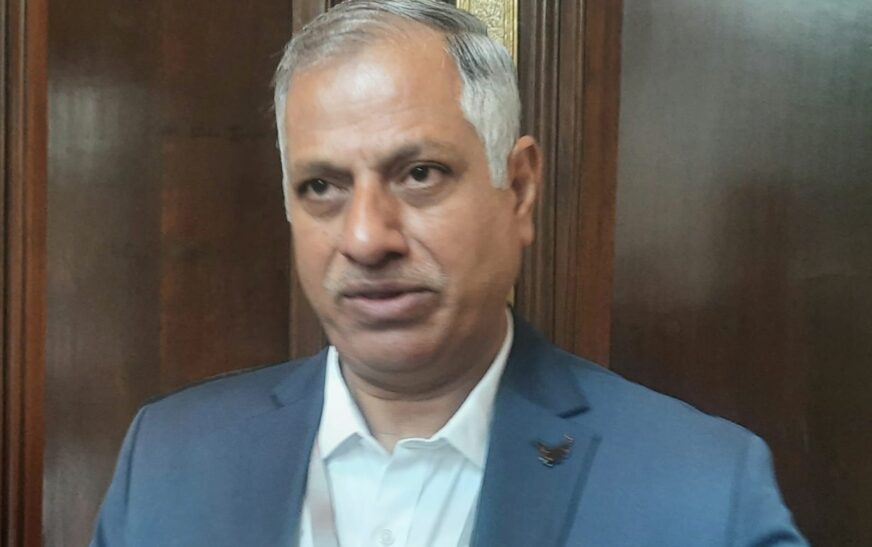Professor Vijay Paul Sharma currently serves as the Chairman of the Commission for Agricultural Costs and Prices (CACP) within the Ministry of Agriculture and Farmers Welfare for the Government of India. With over three decades of rich and diverse experience, Professor Sharma is renowned as an expert in agribusiness management and a seasoned policymaker.
His contributions extend to consulting for various national and international organizations, where he actively engages in agri-food policy formulation, analysis, and advisory roles. Notable among his international assignments are his roles as an International Consultant for the Food and Agriculture Organization of the United Nations (FAO) in Riyadh, Saudi Arabia, and as an Advisor to the “USAID’s Economic Reforms Projects in Central Asian Countries” in Tashkent, Uzbekistan.
In an exclusive interaction with The Interview World, Professor Vijay Paul Sharma accentuates the infusion of public and corporate investment in agriculture to boost this sector. Here are the key excerpts from his interview.
Q: How can we transform the agriculture sector?
A: The catalysis of the agriculture sector in India hinges on a synergistic interplay of infrastructure, incentives, investment, and institutions. A robust and modernized infrastructure, encompassing efficient transportation networks, irrigation systems, and storage facilities, is crucial for optimizing agricultural productivity. In tandem, well-designed incentives can motivate farmers to adopt advanced techniques, embrace sustainable practices, and diversify their crops. Strategic investments, both public and private, are imperative to infuse the sector with cutting-edge technology, research, and development.
Moreover, a strong institutional framework, including transparent governance, effective policies, and supportive regulatory mechanisms, plays a pivotal role in providing stability and guidance to the agricultural ecosystem. The convergence of these four pillars not only propels the sector towards enhanced productivity and profitability but also ensures the long-term sustainability and resilience of Indian agriculture in the face of evolving challenges.
Q: What’s your take on the decline of public investment in the agriculture sector?
A: The declining trend in the share of public capital formation in agriculture over the decades reflects a significant shift in the dynamics of agricultural investments. This transformation has led to a scenario where the majority, approximately 82%, of agricultural investments now originate from the private household sector. This shift indicates a growing reliance on individual farmers and small-scale agricultural enterprises to fund and sustain the development of the agricultural sector.
The increasing dominance of the private household sector in agricultural investments highlights the crucial role played by individual farmers and rural communities in shaping the trajectory of the agriculture industry. These private investments signify not only a financial commitment but also a personal and community-driven interest in the sector’s growth and development. Farmers, as key stakeholders, are making substantial contributions to ensure the sustainability and modernization of agriculture.
On the other hand, the public sector’s share in agricultural investments stands at 15%, reflecting the continued but reduced role of government intervention in supporting and advancing agricultural initiatives. This may indicate a shift towards more market-oriented policies, where the private sector assumes a larger responsibility for driving agricultural progress.
Conversely, the private corporate sector’s relatively modest contribution, hovering around 2%, suggests a potential area for exploration and collaboration. Encouraging increased involvement from private corporations could open avenues for technological advancements, research, and large-scale initiatives that might catalyze innovation and efficiency in the agricultural sector.
Q: How do you decide on the MSP of farm produce?
A: When determining the Minimum Support Price (MSP), a comprehensive evaluation of various factors is essential. Firstly, we consider the production costs involved. Simultaneously, we assess the demand and supply dynamics in both the domestic and international markets. Additionally, we scrutinize the prevailing price scenarios in both the local and global contexts.
Another crucial aspect is analyzing the terms of trade between the agricultural and non-agricultural sectors. Furthermore, we delve into the demand side of the equation. For instance, we have strategically incentivized farmers engaged in poultry, oilseeds, or millet cultivation to foster market development.
In terms of resource utilization, rational allocation is imperative, ensuring optimal use of available land. Moreover, it is imperative to guarantee that farmers receive a minimum 50% margin over their production costs. These factors collectively contribute to a holistic approach in setting MSP.
To prioritize farmers’ well-being, the government has undertaken various initiatives. This includes not only the procurement of rice and wheat but also extending to pulses, millets, and oilseeds. These concerted efforts aim to establish a robust procurement system, reinforcing the agricultural sector’s stability and ensuring fair compensation for farmers.
Q: What kind of impact will the geopolitical situation have on the farm sector?
A: Determining the current situation is challenging due to ongoing developments. The geopolitical conflicts have exacerbated the issue by disrupting supply chains. Ukraine, a major exporter of specific food grains and oil, has witnessed severe disruptions throughout its supply chain due to the war. This is just one aspect of the problem. Moreover, additional factors have further compounded the challenges.










